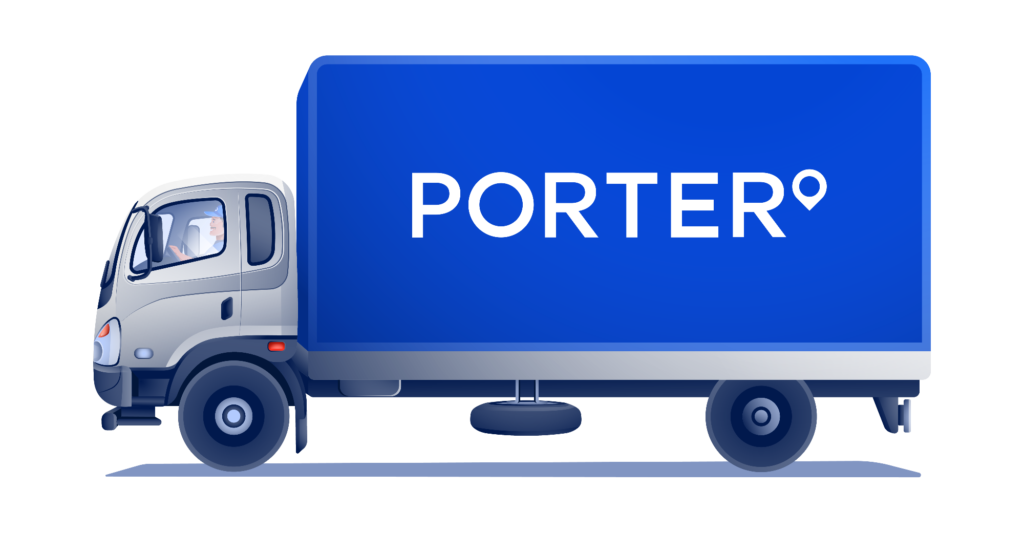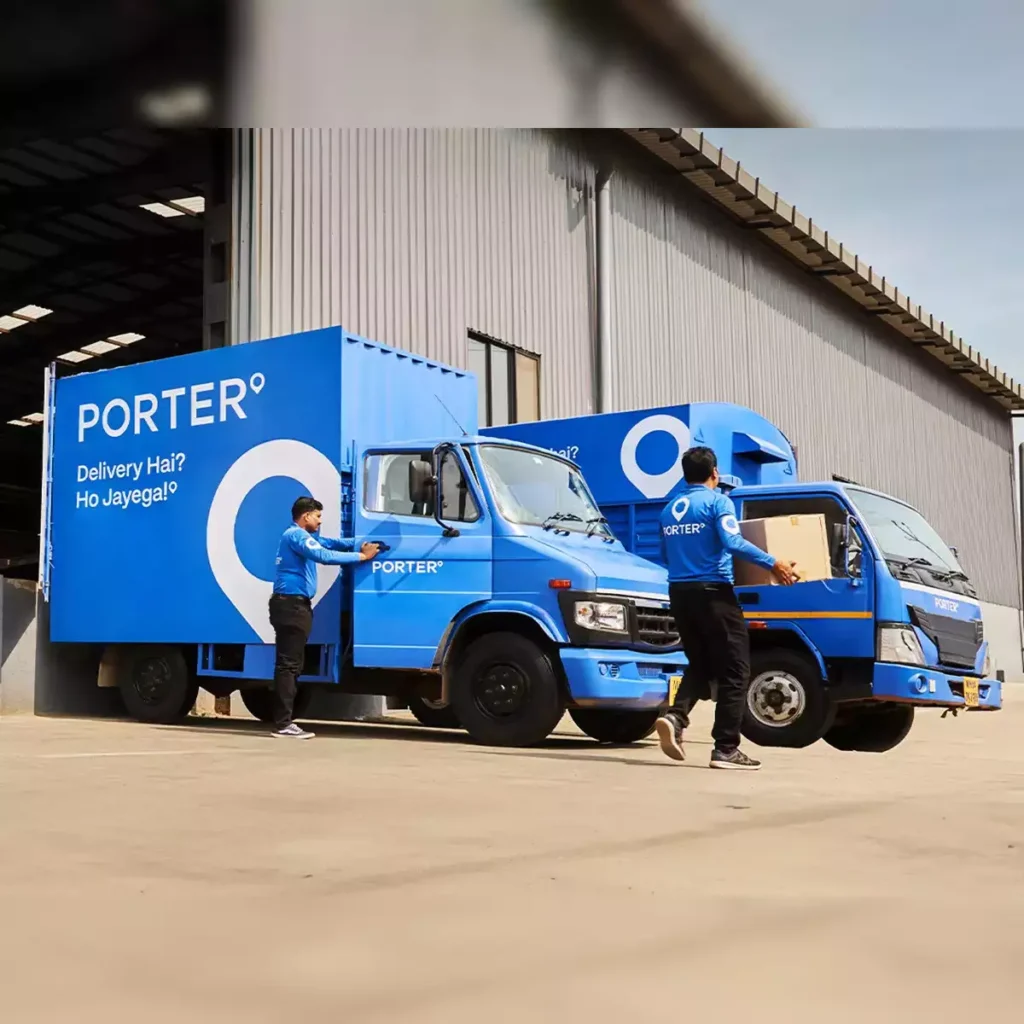
In a market dominated by inefficiencies, Porter has carved out a unique position by reimagining intracity logistics in India. Founded in 2014, Porter has grown to be a major player, serving individuals and small businesses with affordable, tech-enabled logistics solutions. This case study explores how Porter applied a lean, Uber-inspired business model to the logistics sector, its rapid growth trajectory, and the strategic decisions that positioned it to disrupt the $200 billion logistics market in India.
Background
India’s logistics industry faces significant challenges, with costs as high as 14% of GDP—compared to 7-8% in developed countries like the U.S. High logistics costs impact India’s competitiveness on a global scale. In 2014, India’s last-mile delivery was largely unorganized, making it difficult and expensive for small businesses to transport goods within cities. This gap presented a lucrative opportunity, which Porter was quick to identify and address. With a unique business model and technological innovation, Porter aimed to bring affordability and efficiency to intracity logistics.
1. Business Model Innovation: Lessons in Operations
Problem Identification and Market Entry
In its early days, Porter identified inefficiencies similar to those in the cab sector before the advent of Uber: high rates, non-availability, and a lack of transparency. Founders Uttam Digga and Pranav Goel realized that, like cabs, small trucks and commercial vehicles in India were highly underutilized. They aimed to improve asset utilization to lower costs.
Solution: The Porter Platform
Inspired by Uber’s marketplace model, Porter created a digital platform connecting truck drivers with businesses and individuals in need of goods transportation. This allowed Porter to optimize vehicle utilization, making deliveries cheaper and more efficient.
Key Takeaways for Operations:
- Asset Utilization: Porter’s model allowed vehicles to achieve higher utilization, reducing costs for customers while boosting earnings for drivers.
- Cost Efficiency: By not owning any vehicles, Porter avoided the burden of fixed costs, leading to a lean operational model.
- Data and Tracking: Leveraging GPS tracking allowed real-time monitoring, reducing delivery times and enhancing transparency.
Results: Porter’s model enabled it to operate 20% cheaper than traditional logistics services, achieving initial traction with over 500 clients within a year of launch.

2. Strategic Expansion: Lessons in Market Segmentation
Geographic Expansion and Target Market
Initially, Porter operated only in Tier 1 cities but quickly expanded to Tier 2 cities where logistics demand was growing. Their services catered not just to large businesses but also to smaller enterprises and individuals needing reliable, low-cost transport.
Category Expansion: Moving Beyond Trucks
In 2020, Porter launched a two-wheeler parcel delivery service, directly competing with established players like Dunzo. This diversification allowed Porter to tap into the growing demand for last-mile delivery in dense urban areas, adding flexibility for small-package deliveries.
Key Takeaways for Market Strategy:
- Tiered City Strategy: By expanding from Tier 1 to Tier 2 cities, Porter could reach underserved markets with high growth potential.
- Service Diversification: Introducing two-wheelers expanded Porter’s reach and allowed for a broader service range, including quick deliveries of smaller parcels.
Results: The expansion led to a 10-fold revenue growth between 2020 and 2023, making Porter a household name in urban logistics.
3. Customer Experience: Lessons in Brand Management
Focus on Reliability and Transparency
Porter tackled common pain points by ensuring reliable, on-time deliveries. The introduction of real-time GPS tracking on its app provided customers with peace of mind, allowing them to monitor deliveries at each stage.
Customer-Centric Innovations
To improve loading and unloading efficiency, Porter introduced charges for delays, incentivizing customers to adhere to schedules. This increased efficiency across the network, minimizing idle time for drivers.
Key Takeaways for Brand Management:
- Enhanced Transparency: Real-time tracking builds trust with customers, improving satisfaction and brand loyalty.
- Incentivizing Timeliness: Porter’s small but impactful innovation to charge for delays reduced inefficiencies and created a better experience for both drivers and customers.
Results: The customer-centric approach yielded high customer ratings on platforms like the Google Play Store, where Porter maintains an impressive 4.8-star rating from over 650,000 reviews.

4. Financial Sustainability: Lessons in Financial Management
Scaling Smart with Capital Efficiency
Porter’s initial growth relied on lean operations, achieved by avoiding fleet ownership and using an on-demand driver network. Although the company raised substantial capital, they refrained from excessive spending, focusing instead on sustainable growth.
Pivoting Strategy During Funding Crises
In 2015, Porter briefly explored intercity logistics but retracted due to high costs and operational challenges. This disciplined approach allowed the company to refocus on its core intracity logistics services, stabilizing operations in a challenging funding environment.
Key Takeaways for Financial Strategy:
- Asset-Light Model: By not owning vehicles, Porter maintained low fixed costs and achieved a capital-efficient growth model.
- Adaptability: The quick pivot from intercity to intracity logistics illustrates the importance of staying agile in response to market feedback and financial realities.
Results: Porter’s efficient model attracted notable investors, such as Mahindra Group, which merged its logistics arm SmartShift with Porter in 2018 and invested $10 million, validating Porter’s financial prudence.
5. Sustainability and Innovation: Future Growth Areas
Electric Vehicles (EVs)
Porter has begun integrating electric vehicles (EVs) into its fleet, with over 1,000 EVs already deployed. Operating EVs not only aligns with India’s sustainability goals but also offers lower operating costs compared to petrol vehicles, boosting profitability.
Drone Deliveries: Preparing for the Future
Porter is exploring drone deliveries to overcome infrastructure challenges in rural and remote regions. Although India’s drone ecosystem is nascent, Porter aims to be a frontrunner in adopting this technology for last-mile delivery, positioning itself for the future.
Key Takeaways for Innovation and Sustainability:
- EV Integration: Early adoption of EVs allows Porter to reduce costs while meeting the growing demand for eco-friendly logistics solutions.
- Future-Ready with Drones: Experimenting with drone deliveries shows Porter’s forward-thinking approach and willingness to pioneer logistics innovations.
Results: These initiatives not only improve Porter’s competitive edge but also align with India’s green goals, helping to position Porter as a logistics company of the future.
Conclusion: What B-School Students and Business Leaders Can Learn
Porter’s journey provides valuable lessons in strategic growth, financial prudence, and customer-centric innovation. From leveraging an Uber-like model to pioneering sustainability in logistics, Porter has become an example of how a startup can disrupt an entrenched industry.
For aspiring entrepreneurs and MBA students, key takeaways include:
- Identify gaps in high-demand sectors: Porter addressed an untapped need in India’s logistics market by creating a marketplace to improve vehicle utilization.
- Prioritize sustainable growth over rapid scaling: Porter avoided overexpansion and remained financially prudent, refocusing as needed.
- Invest in future-ready technology: From EVs to drone delivery, Porter’s adoption of new technology positions it for long-term growth and industry leadership.
Porter continues to expand its footprint in logistics with a strong focus on affordability, efficiency, and environmental sustainability, aiming to reduce India’s logistics costs and increase productivity.
References:
- Financial reports and investor presentations from Porter
- Analysis of logistics costs and industry trends from industry reports
Leave a Reply